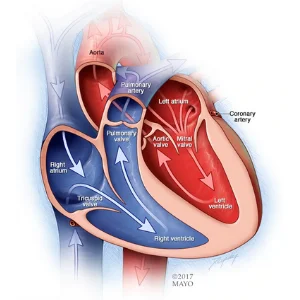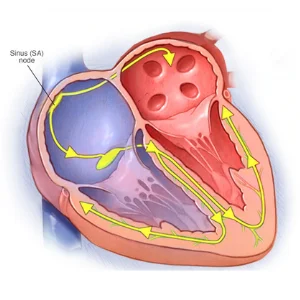Book Your Appointment
Pacemakers
Get Solution At Swasthyam Superspeciality Hospital
Pacemakers
A pacemaker is a small device that’s placed under the skin in your chest to help control your heartbeat. It’s used to help your heart beat more regularly if you have an irregular heartbeat (arrhythmia), particularly a slow one. Implanting a pacemaker in your chest requires a surgical procedure.

Why it’s done?
Pacemakers are implanted to help control your heartbeat. They can be implanted temporarily to treat a slow heartbeat after a heart attack, surgery or medication overdose. Or they can be implanted permanently to correct a slow or irregular heartbeat or, in some people, to help treat heart failure.
What a pacemaker does
An implanted electronic pacemaker mimics the action of your natural electrical system. A pacemaker comprises two parts:
- Pulse generator. This small metal container houses a battery and the electrical circuitry that regulates the rate of electrical pulses sent to your heart.
- Leads (electrodes). One to three flexible, insulated wires are each placed in a chamber, or chambers, of your heart and deliver the electrical pulses to adjust your heart rate.
Pacemakers work only when needed. If your heartbeat is too slow (bradycardia), the pacemaker sends electrical signals to your heart to correct the beat.
Also, newer pacemakers have sensors that detect body motion or breathing rate, which signal the pacemakers to increase heart rate during exercise, as needed.
Risks
Complications from surgery to implant your pacemaker are uncommon, but could include:
- Infection where the pacemaker was implanted
- Allergic reaction to the dye or anesthesia used during your procedure
- Swelling, bruising or bleeding at the generator site, especially if you take blood thinners
- Damage to your blood vessels or nerves near the pacemaker
- Collapsed lung

Risks



Complications from surgery to implant your pacemaker are uncommon, but could include:
- Infection where the pacemaker was implanted
- Allergic reaction to the dye or anesthesia used during your procedure
- Swelling, bruising or bleeding at the generator site, especially if you take blood thinners
- Damage to your blood vessels or nerves near the pacemaker
- Collapsed lung
Results
Having a pacemaker should improve symptoms caused by slow heartbeat, such as fatigue, lightheadedness and fainting.
Your doctor should check your pacemaker every three to six months. Tell your doctor if you gain weight, if your legs or ankles get puffy, or if you faint or get dizzy.
Your pacemaker’s battery should last five to 15 years. When the battery wears out, you’ll need surgery to replace it. The procedure to change your pacemaker’s battery is often quicker and requires less recovery time than the procedure to implant your pacemaker.
Because most of today’s pacemakers automatically adjust your heart rate to match your level of physical activity, they can allow you to resume a more active lifestyle.
- Stop smoking.
- Follow a healthy-eating plan, such as the DASH diet.
- Achieve and maintain a healthy weight.
- Exercise regularly.
- Manage stress.
Message Us
Get In touch with us. Ask Any Question or Book Your Appointment Now
Emergency
+91-8600888444
Book An Appointment
0712-2222111
Contact Us
Location
97/98 Vivekanand Nagar, Near Sai Mandir, Wardha Road, Nagpur
Contact for
Emergency :- +91-8600888444
Book An Appointment:- 0712-2222111
